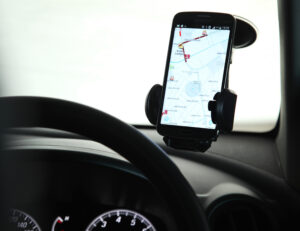Geofencing: Master Tool To Revolutionize Your Taxi Dispatch Service
Lately, the term “geofencing” has become the catchword of the ride-hailing industry due to the convenience it offers to the taxi business owners and the drivers. Around 30% of the world’s population is already using or being influenced by the location targeting services. Let us have a gander at what exactly is geofencing and how it has been transforming the taxi industry.
What is geofencing?
In the metamorphosing taxi sector, geofencing is a virtual geographical boundary an admin can set on the integrated map using a global positioning system (GPS). It is even known as a virtual perimeter which makes real-time tracking easier.
There are two types of geofence virtual barriers:
- Active Geofencing: It is an end-user dependent virtual barrier. It uses location services to track down the users.
- Passive Geofencing: This virtual barrier depends on internet connectivity and stays on all the time. They can be either cellular or via Wi-Fi. These type of barriers always work in the background while the location setting on a smartphone is switched on.
How does geofencing work?
The admin can specify the area of operation by simply connecting the dots on the map. This enables setting up triggers when a device enters or exits the defined boundaries.
When an admin specifies the area via geofencing, it restricts the customers from requesting a ride and drivers from receiving a ride request when they are located outside the geofenced area. This feature even facilities the admin to modify the defined operational area at any time. The admin can also define boundaries in the satellite view of a specific geographical area by incorporating Google Earth in geofencing.
Geofencing results in better fleet utilization and improving the demand-supply ratio. It even facilitates the admin to take faster operational decisions in real-time.

The basic working of geofencing requires location services to detect a user’s device within a geofenced area in order to trigger notification or track visits. The type of location services being used varies depending on the provider. Geofence can use – Cellular services, Wi-Fi services, and GPS.
What are the applications of geofencing?
The geofencing technology set new levels for parameters like efficiency and safety. This feature has more than what meets the eye. Let’s check out some of the uses of geofencing:
- Location Tracking: This solves the problem of tracking down the total visits to an active geographical area. It shows the number of times a resource is present in a particular location which can be used to increase the ROI. The total data aids in analyzing the insights of the fleet which assists in making better decisions.
- Monitoring Assets: Not just tracking assets, even checking on the frequency of a particular resource can be done. It can be even used to read the data related to a particular asset by fixing geofencing to a particular operational location or a vehicle.
- Alerts: An alert gets triggered whenever an object or person enters or leaves a geofenced area. The generation of an alert makes it possible to investigate the situation before the condition gets out of control.
- Traffic Restriction: The main problem in the urban area is the traffic and traveling restrictions to certain areas make the scenario worse. These restrictions result in wastage of time. Here geofencing can be used to alert the vehicle not to enter the restricted areas.
- Meeting Customer Demands: The main criteria of any industry is to ensure that the demand of a customer is fulfilled. User experience drives the whole system. Geofencing enables the admin to set up a region or specific area with high demand. This would boost the return on investment and increase the count of customer retention.
- Fare fixation: Just like surge pricing, the business can set fix fare for trips from one zone to another zone. The fare fixation zone is as follows:
- City-based Fare (if the city is set as a zone)
- Zone-based Fare (if a particular location is set as a zone)
- Zone-to-zone Fare (between two zones)
Based on the location that has geofencing, the business owner can increase the vehicle range which will aid in improving the reliability of the service. Providing ride-hailing services by distinguishing locations based on the demand like airports, bus and train station, etc or even selecting a particular place like a city or area within the city depending on the rate of demand. This way the procedure of dispatching became easier for the taxi business owners.

Geofencing is not just a location tracking tool. It is a multipurpose tool which can be applied in different ways to facilitate your strategy. Through its proper application, geofencing can give your Taxi Dispatch software the efficiency to improve your business and the cutting edge to outsmart your competitors.
Want a taxi dispatch software compatible with the geofencing feature? Search no further! At Jugnoo, we believe in providing the very best to our clients. Thanks to the constant effort from our R&D wing, our taxi dispatch software incorporates geofencing and several other features that can easily give you the upper hand against your rivals. If you are curious to learn more the geofencing feature feel free to book a free demo.




